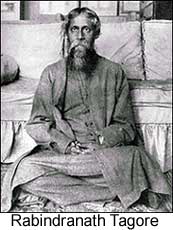 Historians of Bengali literature find early forms of Bengali literature between the 8th and 12th century A.D. Among these the Natha literature from the 12th century which emerged from the Buddhist Sahajiya cult. The Vaishnava cult also gained ground. The Vaishnava cult also gained ground.
Historians of Bengali literature find early forms of Bengali literature between the 8th and 12th century A.D. Among these the Natha literature from the 12th century which emerged from the Buddhist Sahajiya cult. The Vaishnava cult also gained ground. The Vaishnava cult also gained ground.
From the middle of the 14th century, Radhakrishna lyrics became very popular and Chadidas was the great spokesman of this form of writing. He has composed about a thousand poems.
Translations or rather adaptations of the Ramayana became very popular in the 15th century. The most well-known is the Ramayana by Krttivasa Ojha. It is revered as much as the Ramacharitamanasa of Tulsidas in North India.
The types of literature which became popular after the Bengali rendering of the classical Sanskrit works are called the Mangal Kavyas. There are three recognized varieties of Mangal Kavyas :
- Manasamangal
- Chandimangal and
- Dhamamangal, each representing a separate Godhead.
The advent of Sri Chaitanya (1486-1533) was an epoch-making event in Bengali literature which spread to neighbouring languages as well. The life and teachings of Chaitanya made Vaishnavism a living faith. Many of his disciples produced literature of great power and the influence continued for over two centuries. The literature comprised of two classes, lyric poetry and biographical works. The Radhakrishna love songs were so popular that even Muslim poets composed some poems on the same theme.
The modern period begins practically with the 19th century. Bengali prose evolved and developed in such a manner that it became a suitable medium for literary expression.
The European missionaries produced grammars and dictionaries and they translated the Bible into the Bengali prose. The contribution of William Carey, a Serampore missionary was so significant to Bengali and other languages that it will never be forgotten. Carey wrote a Bengali grammar, compiled an English-Bengali dictionary and organized the translation of the Bible into Bengali.
Continue...



